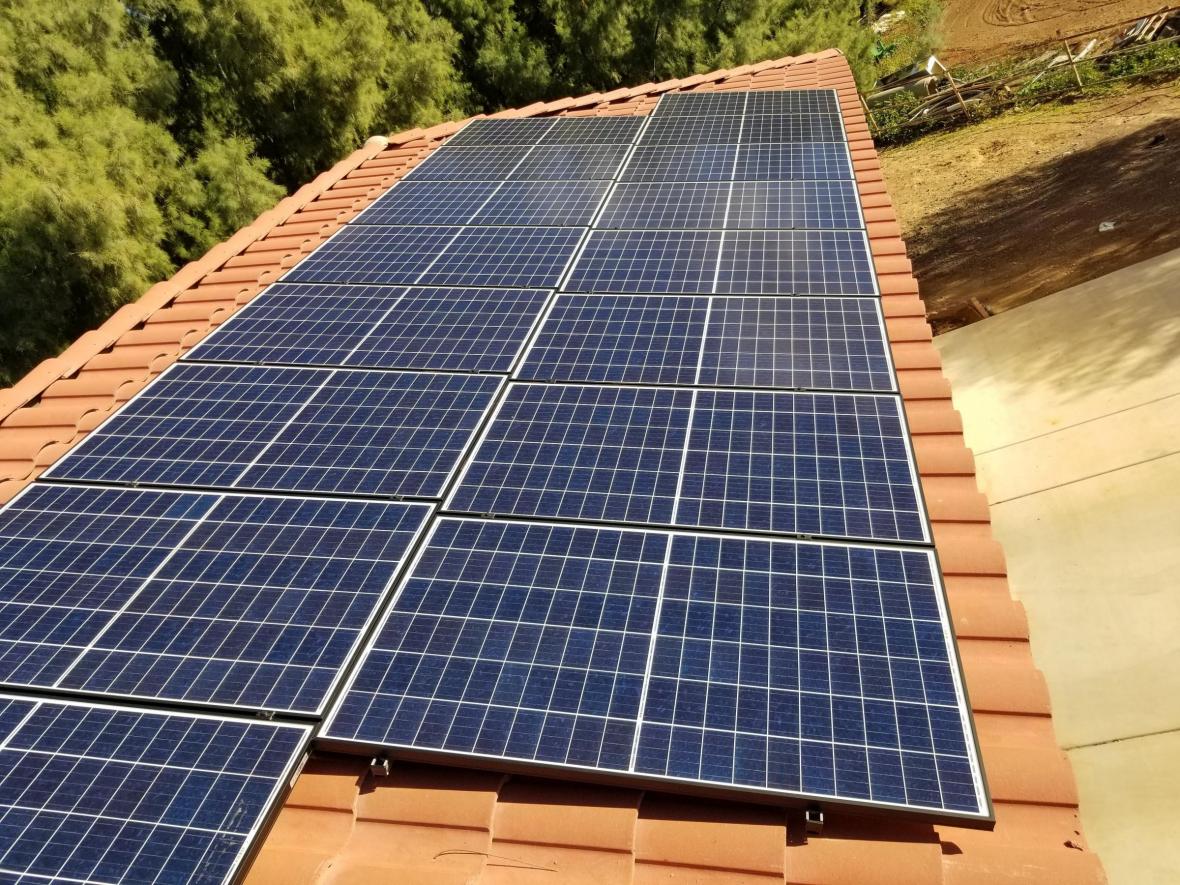
Solar panels are appearing on roofs from Flagstaff to Phoenix, and it may have you wondering whether your house is a good candidate for solar. With the many benefits that solar panels in Arizona can offer—like reduced or eliminated electricity bills, protection against rising energy costs, a high return on investment, and access to the 26% federal solar tax credit—now is a good time to ask.
Given the many options available for residential solar PV systems, chances are there is a solar solution for your home. Here are some of the most important roof factors to think about as you consider investing in solar panels for your house:
Is Your Roof Big Enough for Solar Panels?
You will need plenty of open space on your roof if you’re hoping to have solar panels installed there. A good rule of thumb is that if your roof could theoretically fit three cars parked side-by-side, it has enough open space for solar panels. The most suitable roofs for solar are relatively clear of obstructions like chimneys and dormers.
What Direction Is Your Roof Facing?
Here in the Northern Hemisphere, south-facing solar panels see the most sunlight throughout the day and therefore generate the most energy. However, your roof does not need to face south in order for solar to make financial sense.
If your local utility charges more for electricity used during the late afternoon and evening, for example—as many Arizona utility companies, like TEP, do—it may be advantageous to install west-facing solar panels on your roof (because west-facing panels will generate more electricity during the afternoon and evening.) Energy Solution Providers will position your solar panels optimally to maximize electricity production.
Is Your Roof Angled or Flat?
Many Arizona homeowners believe that you must have a sloped roof in order to install solar panels. However, flat roofs can also be excellent candidates for solar. In fact, a flat roof allows a solar contractor to install solar panels at the optimum orientation and angle for maximum energy production based on your location. While some solar energy system components, like the racking used to mount the solar panels, may differ for a flat roof, installing solar on a flat roof is cost-comparable to installing solar on a sloped roof.
Does Your Roof Get Enough Sunlight for Solar Panels?
In order for roof-mounted solar panels to be the most effective at providing your home with clean energy, they must see at least four hours of peak sunlight during the day. If your roof is heavily shaded by nearby trees or buildings (or even other parts of the roof), this may not be possible. Keep in mind, however, that shading on your roof changes throughout the day, and some shading might not be as much of an issue as you think.
What Roofing Material Is Your Roof Made From?
Solar panels are best installed on strong, durable roofing materials like composite or asphalt shingles, concrete tile, or standing seam metal. That said, a skilled solar provider like Energy Solution Providers has the experience necessary to install solar panels on other roofing materials too, including wood shakes, or clay or slate tiles.
Do You Have Space for Ground-Mounted Solar Panels?
Your roof isn’t the only place where you can install solar panels. If your roof has numerous obstructions, sees excessive shading, or is otherwise not ideal for solar, a ground-mounted solar panel system might be right for you. Energy Solution Providers installs ground-mounted solar systems as well as rooftop solar and will help you make the best choice for your home.
Have You Chosen the Best Solar Panel Installer in AZ?
Ultimately, the right solar contractor will be able to assess your roof and walk you through your options based on its unique factors. Energy Solution Providers can determine whether your roof is suitable for solar panels and design a solar PV system that makes the most sense for your home.
If you have questions about what solar panels might look like on your roof, get in touch with our team! We install grid-tied and off-grid solar panels as well as solar battery storage and commercial solar panels.
